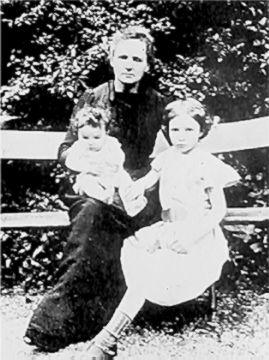Out of sheer luck of the calendar, this month’s Science Grrl falls on Veterans Day so I had to dedicate this month’s column to the Goddess of Science Grrl Veterans…Rear Admiral Grace Murray Hopper who has an entire conference named after her. Hopper entered the Navy under the WAVES program.
***
Fellow GWPenner Lori mentioned Lise Eliot’s recent book Pink Brain, Blue Brain last month. In my reading of the book, I found Eliot’s balance between nature versus nurture commendable. Despite being a science grrl, I do find myself wanting nurture to win out since then it would be just darn easier to toss out the pink and blue crap.
I hate seeing toys that have no gender to them, like laptop computers, painted pink for girls and not-pink for boys. This country has a problem with the low number of students who want to study computer science, especially girls. I don’t think that having pink laptops will get girls to want to study computer science. But in my conversation with Eliot, she suggests that we hijack this pinkification of our girls world and give it to them, but be subversive too.
But how far do we allow it to go? The Discovery Channel is a great place to find science toys online, but even they separate out girls and boys toys. If you look at the toys offered, a very small number are stereotypical. I assume that they are buying into parents who will come to an online store and immediately look for the boys tab. But I think that the Discovery Channel would do a world of difference for girls in science if they simply had age segregation for their toys. Send a message to parents and gift-buyers that science is gender neutral.
We are shortchanging our girls by making all their things pink. It tells them that their things are different. Luckily the Discovery Channel gender-segregated toy store doesn’t house a pink microscope. So perhaps they are being subversive when a parent goes on and sees “Oh, a girl microscope!” and really it’s just a plain old microscope. I can’t only hope.
Pink Girl, Blue Girl is an excellent read and I believe if we followed Dr. Eliot’s recommendations as we raise our kids, we will see more girls in science.


 It’s hard for me to believe it, but it’s been 20 years since I first visited the
It’s hard for me to believe it, but it’s been 20 years since I first visited the  Last week National Academies Press released findings from a
Last week National Academies Press released findings from a  This month Science Grrl looks at the mother-daughter bond in science & engineering.
This month Science Grrl looks at the mother-daughter bond in science & engineering. One of my most vivid memories of first grade is when Mrs. Gerry wouldn’t let me have
One of my most vivid memories of first grade is when Mrs. Gerry wouldn’t let me have 
 Happy Women’s History Month from Science Grrl! But for this post, you can call me Engineering Grrl, even though the only thing I’ve ever engineered is how to make all the pieces of an IKEA furniture piece fit where they need to fit.
Happy Women’s History Month from Science Grrl! But for this post, you can call me Engineering Grrl, even though the only thing I’ve ever engineered is how to make all the pieces of an IKEA furniture piece fit where they need to fit.  January 20, 2009 not only ushered in a new President, but a President who believes in science and wants to fund it. While I haven’t been in the lab in over a decade, my heart is still there, and I have been working on a daily basis for over ten years to convince more women to decide on a scientific research career.
January 20, 2009 not only ushered in a new President, but a President who believes in science and wants to fund it. While I haven’t been in the lab in over a decade, my heart is still there, and I have been working on a daily basis for over ten years to convince more women to decide on a scientific research career. 